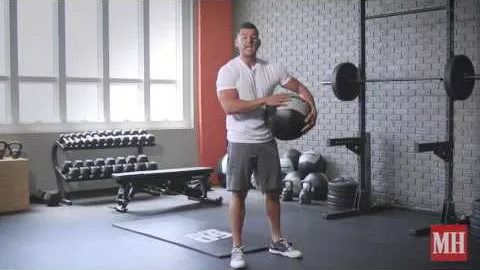
The Rolling Squat Exercise: Strengthen Your Core and Build Lower Body Muscles
The Rolling Squat exercise is a highly effective compound movement that targets various muscle groups, including the core, glutes, quads, hamstrings, and calves. It combines elements of a traditional squat with a rolling motion, which adds an extra challenge and engages the stabilizing muscles.
This article will guide you through the proper execution of the Rolling Squat exercise, its benefits, common variations, and how to maximize its effectiveness in your workout routine. Let's dive in!
Starting Position: Begin by standing with your feet shoulder-width apart, toes pointing forward. Keep your back straight, chest up, and engage your core muscles.
Descending: Initiate the movement by flexing your hips and knees, pushing your hips back as you lower your body into a squat position. Maintain a neutral spine throughout the movement.
Rolling: Once you reach the bottom position of the squat, start rolling towards your right side. Push your body off the floor using your left hand and bring your right foot towards your left foot, rolling onto your right hip while keeping your legs bent.
Ascending: Simultaneously, reverse the rolling motion by pushing off your right hand and extending your legs, moving into a standing position. Ensure proper form and control during the ascent.
Closing the Loop: Repeat the rolling motion to the left side, rolling onto your left hip and returning to the squat position.
Tips for Proper Execution:
Strengthening the Core: The Rolling Squat exercise engages the entire core, including the rectus abdominis, obliques, transverse abdominis, and lower back muscles. This helps improve core stability, posture, and overall functional strength.
Developing Lower Body Muscles: The primary muscles targeted during the Rolling Squat exercise include the glutes, quads, hamstrings, and calves. By incorporating this exercise into your routine, you can effectively tone and strengthen these muscle groups.
Improving Mobility and Coordination: The rolling motion in this exercise challenges your body's coordination and mobility, promoting better overall movement skills and flexibility.
Enhancing Athletic Performance: Due to its compound nature, the Rolling Squat exercise improves lower body strength and stability. This can lead to enhanced athletic performance, particularly in activities requiring jumping, sprinting, and change of direction.
Calorie Burning: As a compound movement, the Rolling Squat exercise activates multiple muscle groups simultaneously, leading to increased calorie expenditure. It can be an excellent addition to your cardio and weight loss routines.
Weighted Rolling Squat: Hold a dumbbell or kettlebell close to your chest during the exercise to add extra resistance and increase the challenge.
Side-to-Side Rolling Squat: Instead of rolling forward and backward, roll from side to side. This variation targets the obliques and adds an abdominal twist to the exercise.
Jumping Rolling Squat: Incorporate an explosive jump at the end of the ascending phase to intensify the exercise and enhance power development.
Medicine Ball Rolling Squat: Hold a medicine ball with both hands while executing the Rolling Squat. This variation further engages the core and upper body muscles.
To fully benefit from the Rolling Squat exercise, consider the following tips when incorporating it into your workout routine:
Warm-Up: Always warm up your body with dynamic movements, such as lunges, leg swings, and hip circles, to prepare your muscles for the Rolling Squat exercise.
Starting Out: Begin with bodyweight Rolling Squats to master the movement pattern and ensure proper form. As you gain strength and confidence, gradually add resistance using weights or variations.
Repetitions and Sets: Aim for 8-12 repetitions per set. Start with 2-3 sets and progressively increase the volume as you become more comfortable and stronger.
Rest and Recovery: Allow adequate rest between sets to maintain intensity and prevent excessive fatigue. Additionally, incorporate sufficient rest days into your overall training schedule to promote recovery and avoid overtraining.
Progression: To continue challenging your muscles, periodically increase the resistance, repetitions, or sets. Experiment with different variations to keep your routine diverse and exciting.
In conclusion, the Rolling Squat exercise is an excellent addition to any fitness routine, offering numerous health and strength benefits. By engaging the core and lower body muscles, improving mobility and coordination, and enhancing athletic performance, this exercise contributes to a well-rounded fitness program. Incorporate the Rolling Squat into your workout routine today to maximize your training results and take your fitness to the next level.
If you're looking for a gym, fitness club or yoga studio, you've come to the right place.
You can find information about gyms in your area. Browse catalog of gyms and find gyms with classes which are you looking for.
On gym page you can find simple information like address, phone or website. You can find list of available classes. You can check availability of personal training or small group classes. On place page you can also see information about open hours.
You can find gyms near you with amenities, courts, studios and equipments.
Use our map to find gym at your city or district.
In Gym Navigator you can find list of exercises with movies for many body parts.
You can browse exercises catalog and find exercises the best of you.
You can also find exercises grouped into workout plans, which you can use to improve you body. Each routine show you exercises one by one and give you possibility to count you progress and count down rest time.